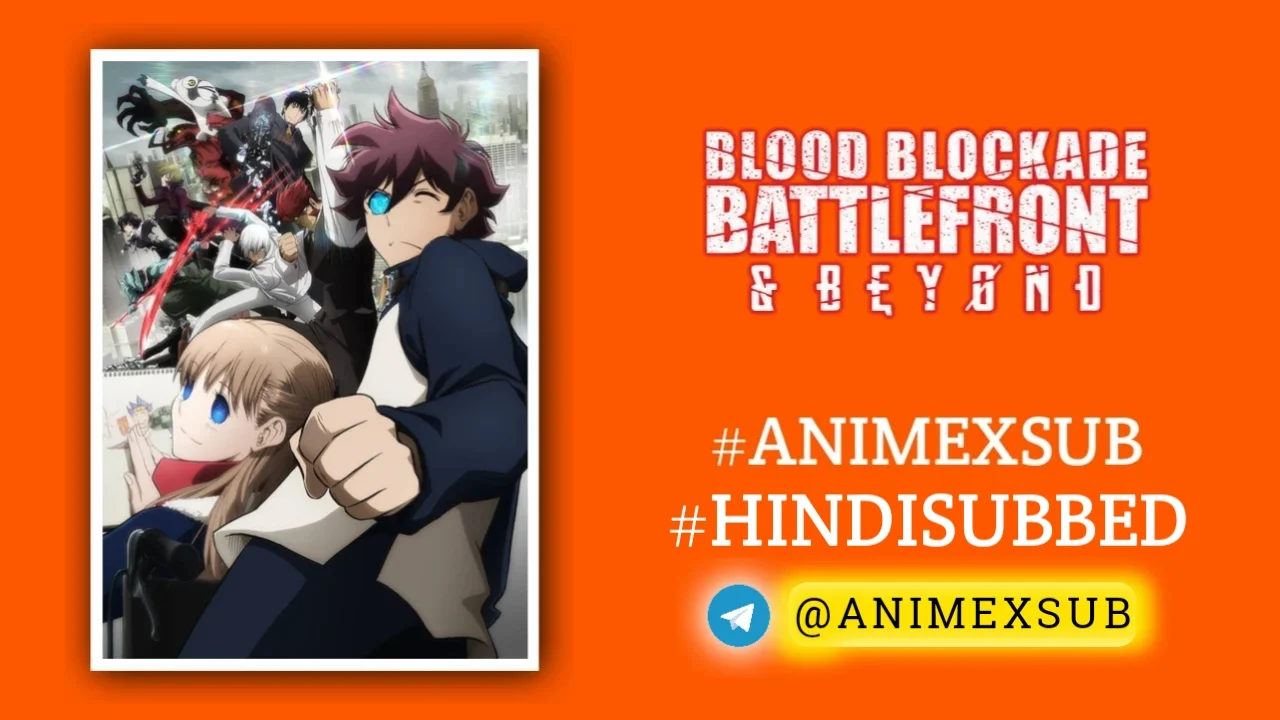
Blood-C Season 1 Hindi Subbed [12/12] | Blood C Hindi Sub

BLOOD-C
Blood-CSynopsis
Saya is a seemingly normal girl living with her father in a shrine. During the day she goes to school and spends time with her friends at a local cafe. But when night falls Saya is called upon to protect her village from strange monsters. (Source: Anime News Network)
Watch Trailer
Characters
Episodes
Blood-C Season 1: A Haunting Blend of Deception and Gore
Blood-C (2011), a 12-episode anime from Production I.G and CLAMP, is a polarizing entry in the Blood franchise, distinct from Blood: The Last Vampire and Blood+. It’s a slow-burn horror-action series that lures viewers with a deceptively idyllic setup before unraveling into a psychological nightmare. This review dives into its unique narrative structure, thematic depth, and divisive execution, offering fresh insights without spoilers for those new to the series.
A Dual Life in a Fragile World
At its core, Blood-C follows Saya Kisaragi, a seemingly cheerful high school girl and shrine maiden in a quaint rural town near Lake Suwa, Nagano Prefecture. By day, she’s clumsy, sings on her way to school, and enjoys coffee at a local café. By night, she wields a ceremonial katana to slay grotesque Elder Bairns—monstrous creatures that feed on humans. This duality sets the stage for a narrative that juxtaposes mundane slice-of-life moments with visceral, gory battles, creating an unsettling contrast that defines the series.
Unlike its predecessors, Blood-C leans heavily into a high school setting, with CLAMP’s signature character designs—elegant, elongated figures with expressive eyes—lending a deceptive warmth to the cast. The early episodes feel episodic, almost formulaic: Saya attends school, interacts with friends like Nene, Nono, and Shinichirō, and fights a unique Elder Bairn each night. But this rhythm is deliberate, masking a deeper, more sinister narrative that emerges as Saya’s reality begins to crack.
Thematic Depth: Reality, Control, and Betrayal
Blood-C distinguishes itself through its exploration of existential themes. The series questions the nature of reality, free will, and the manipulation of identity. As Saya battles Elder Bairns, cryptic hints from the creatures and a mysterious talking dog challenge her understanding of her mission and existence. The show’s slow pacing in the first half, often criticized as dull, is a calculated choice to immerse viewers in Saya’s idyllic world before dismantling it, forcing both her and the audience to confront uncomfortable truths.
The Elder Bairns, inspired by Lovecraftian Great Old Ones and Japanese yokai, are visually striking, each with a distinct, grotesque design—think eyeball-covered beasts or sentient shadows. Their increasing daytime attacks escalate the stakes, blurring the line between Saya’s “normal” life and her violent duty. This escalation, paired with the series’ unrelenting gore, amplifies the horror, though it’s less about jump scares and more about psychological dread and visceral brutality.
Strengths: Visuals, Sound, and Subversion
Production I.G’s animation is a standout, delivering fluid fight choreography and vivid depictions of violence that rival Elfen Lied or Gantz in intensity. CLAMP’s character designs contrast beautifully with the gruesome battles, enhancing the series’ deceptive tone. The soundtrack, with haunting tracks like Nana Mizuki’s “Spiral,” complements the eerie atmosphere, while sound effects—squelching blood, snapping bones—heighten the horror.
The series’ greatest strength is its subversive narrative. It toys with viewer expectations, blending slice-of-life tropes with psychological horror akin to When They Cry. By the midpoint, subtle clues—odd character behaviors, memory gaps—hint at a larger conspiracy, keeping viewers hooked despite the slow build. The final episodes deliver a gut-punch revelation that recontextualizes everything, rewarding attentive viewers who endure the initial pacing.
Weaknesses: Pacing and Character Depth
Blood-C isn’t flawless. The deliberate slow pacing in early episodes can feel tedious, especially for those expecting the action-heavy Blood+ or a straightforward horror fest. The school-life segments, while integral to the narrative’s deception, drag with repetitive interactions and underdeveloped characters. Saya’s friends—Nene, Nono, Itsuki, and Shinichirō—lack depth, serving more as plot devices than fully realized individuals, which can make their arcs feel hollow.
Saya herself is a divisive protagonist. Her cheerful, almost caricatured demeanor early on clashes with her stoic monster-slaying persona, and while this schizophrenia is intentional, it can alienate viewers expecting a more grounded heroine like Blood+’s Saya. Additionally, the series’ reliance on extreme violence may overwhelm those not accustomed to graphic content, and its blacklisting in China for gore underscores its intensity.
A Unique Horror Experience
Blood-C isn’t traditional horror—it won’t keep you up at night with supernatural scares—but it excels at psychological unease and graphic violence. Its blend of high school comedy, action, and existential horror is both its strength and its Achilles’ heel, demanding patience and a tolerance for gore. For those who enjoy unraveling mysteries or appreciate anime that defy conventions, Blood-C offers a haunting, unforgettable ride. It’s not for everyone, but its bold narrative risks and CLAMP’s artistic flair make it a standout in the horror-action genre.
Rating: 8/10 – A slow but rewarding descent into deception, best for fans of psychological horror and gore-heavy anime. Watch it for the twists, but brace for the blood.















